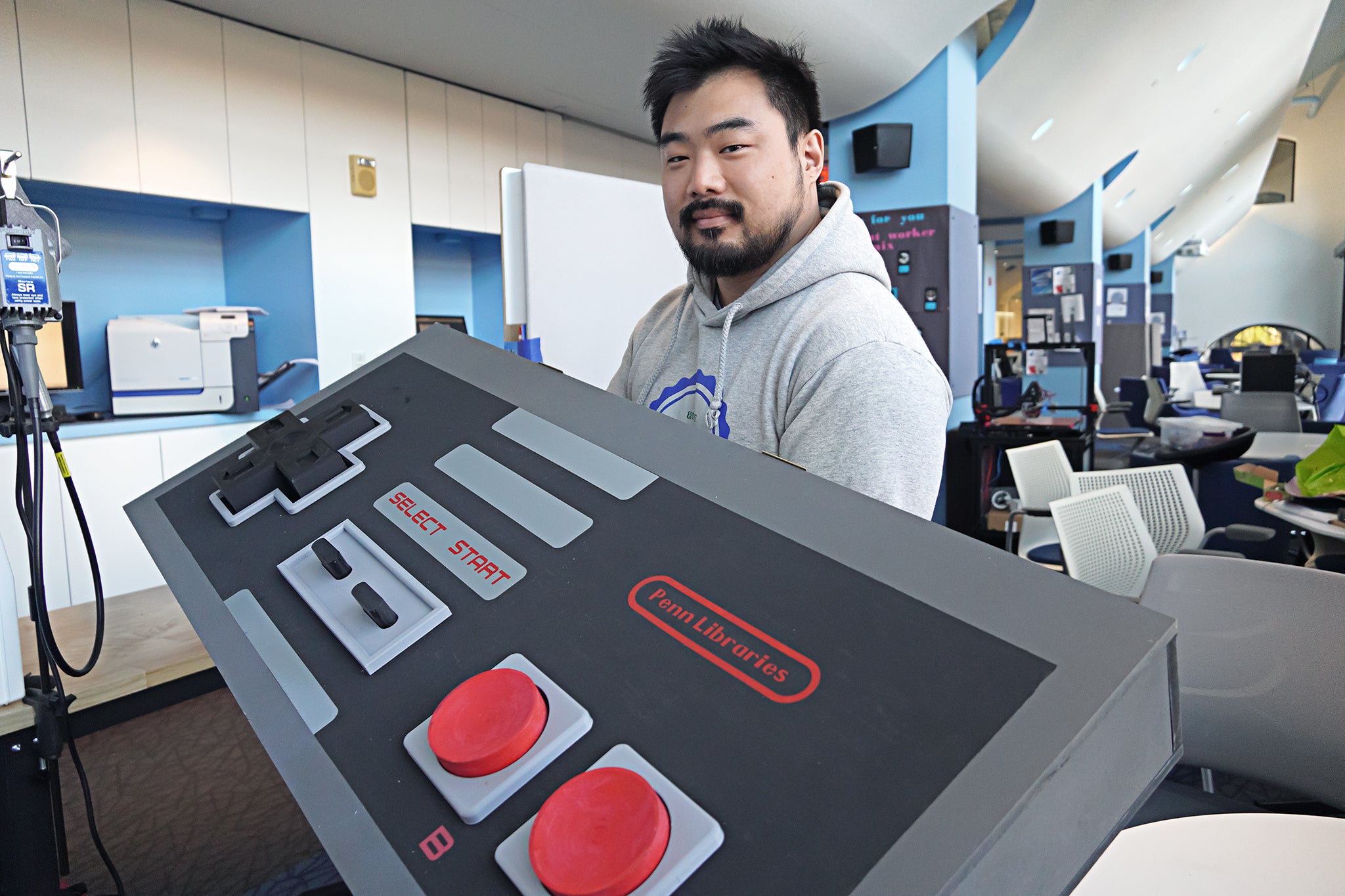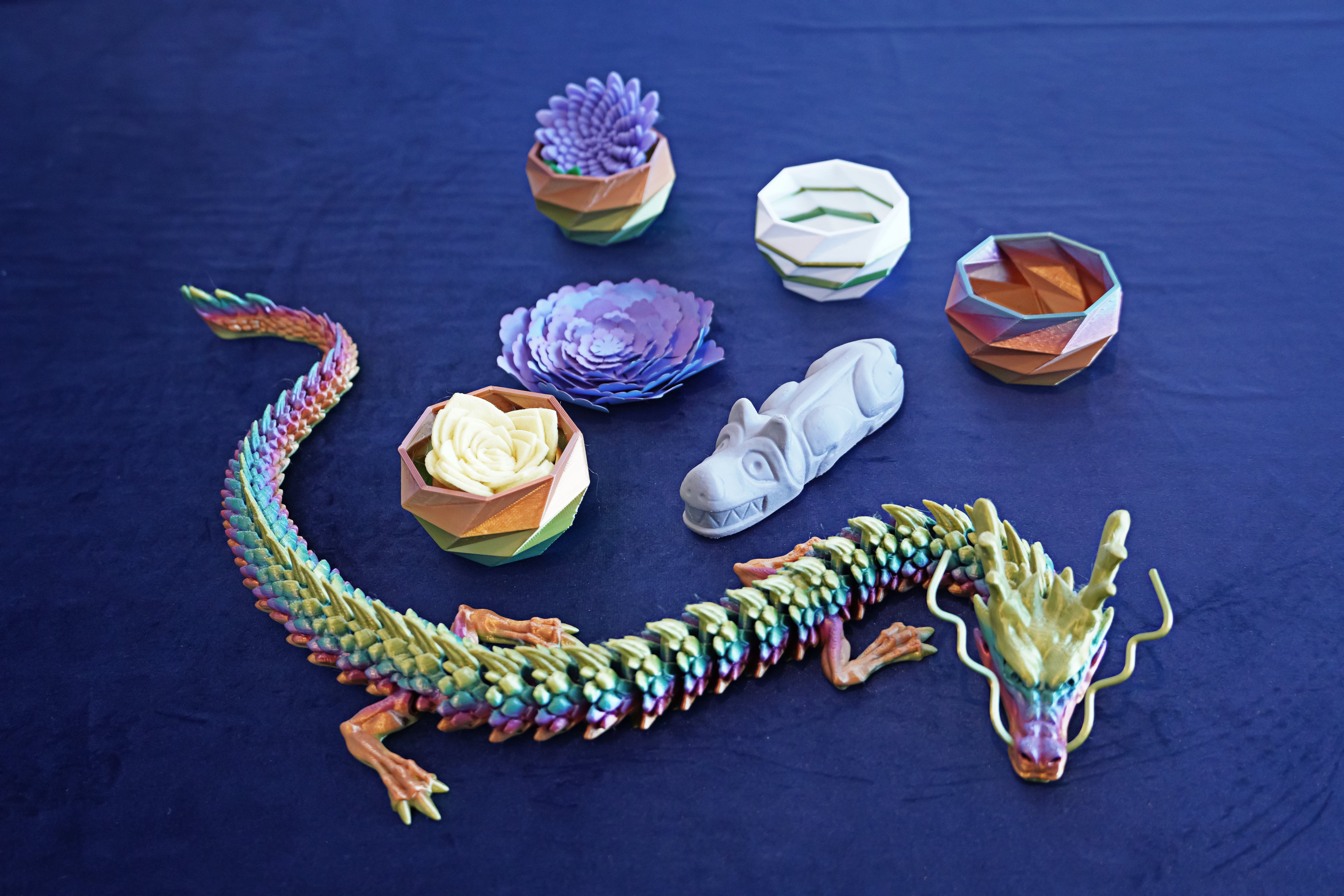Taking Play Seriously at the Penn Libraries
"As humans, we're all weird. So, embrace your weirdness."

An institution like the University of Pennsylvania, with its distinguished system of academic research libraries, can create an intimidating impression – even to the bright and ambitious students selected to attend. But Jade E. Davis, Director of Educational Technology and Learning Management for the Penn Libraries, and her team are working to turn this notion on its head by leaning into the role of libraries as a platform to spark imagination and discovery. Davis, alongside colleagues Steve Scaduto, Assistant Director of Learning Enrichment; and Christine Kemp and Tex Kang, both Program Coordinators for Technology and Play, are designing intentional experiences for the Penn community based on a type of activity that many don’t associate with libraries: play.
Developing community and creativity
Throughout the library system but especially within Education Commons and Vitale Digital Media Lab, the Learning Enrichment team regularly facilitates and supports play through both planned activities and in response to student requests, with an ultimate goal to benefit student wellness and well-being. Wellness and play are deeply connected, because play helps humans — and all mammals, for that matter — to build relationships and community with one another. Davis says that the Libraries’ play activities generate “a space for creating mutual connections and building relationships, instead of just places where we are dealing with the dynamics of interpersonal strife” that can arise in competitive, high-pressure environments. Much like the Libraries’ wellness offerings, Scaduto adds that the opportunities for play “really prevent people from falling through the cracks and getting lost."
There’s plenty to learn about oneself by playing alone through learning a new skill, experimenting, or making art; but playing with others also helps develop the soft skills that can be essential in the workplace — and in life, generally — such as teamwork and communication.
“Play is just a form of communication with others,” Kang says, adding that learning someone else’s style of play can help us relate better to them.
Collaborating with others through play, rather than through serious work, is a valuable use of time because it creates a safe environment, Kemp says: “You’re willing to take a chance and try something out and experiment in an environment where you feel like there’s no judgement.”
In fact, it’s perfectly fine to fail while playing, because there are no stakes. A low-risk environment supports innovation and creativity.
“Play builds resilience. Play allows people to go through the emotions and actions of taking risks, knowing that the consequences will not be a permanent consequence,” Davis says.
“It’s also intimidation-busting,” adds Scaduto. “I think of students I’ve had in the past [working in student services], where they might say, ‘I can’t.’ ” They think they can’t write, for example, or can’t draw. “Play is just a way to dispel that.”
Kang says, “A lot of the things that you do, especially at this developmental age [for undergraduate students in particular], require a goal in mind. You have to do something because you have to achieve this goal. But playing allows you to do things just for the sake of it, or just for the fun of it, or just for the weekend.”

Portals to discovery
Play and playfulness reward an attitude of curiosity, which in addition to new relationships can lead to new skills and interests. That development of curiosity is, according to Davis, where libraries come in as the ideal site for facilitating play.
“People tend to think of what's in a library rather than what a library is,” Davis explains, “But it was always designed as an open space of discovery that’s supposed to be on the cutting edge. And play is really about discovery.”
For Kemp, a playful introduction to 3-D printing led to a shift in career paths, from creative writing to working in a makerspace – a possibility that did not even exist when she finished her undergraduate education. “A curiosity may lead to changing your life and opening up new ways of thinking,” she says, speaking from her own experience.
The other aspect of libraries that makes them well-suited for play is their vast resources. In the case of the Penn Libraries, students can utilize technological resources to create everything from original podcasts and videos, to 3-D printed tools and toys, to one-of-a-kind artworks using a variety of materials.
A large part of the job for Kang and Kemp is working with students to design and create items to solve a problem, answer a need, or just bring a fun idea to life.
“Things that I really enjoy doing the most are when people come in with a problem and I'm able to help them solve it in a really creative, unique way that they didn't even think would be an option,” Kemp says.
“We are user-driven in a way that other parts of a university campus can’t be, because we aren’t tied to a curriculum,” Kang says.
At the same time, the team can work with students to better understand theories they learn in the classroom with complementary activities and experiments: “Being able to have a [library space] where we do projects that enhance their learning experience with an activity, I think, makes people see things in a brand new way,” Kemp says. “It's been just this really wonderful way of seeing them taking what they're learning in the classroom and putting it into practice with resources.”

Connections through collections
Just as play can make the learning experience more accessible, it can also open up the libraries’ collections for engagement on students’ own terms – even those items that might seem esoteric or immaterial to undergraduates’ lives or studies.
Kemp has enjoyed working with librarians to make collections fun and accessible; recent examples include an "Eel Warrior" embroidery pattern she created based on an illustration from the Kislak Center's Ms. Codex 724, and an embroidery pattern as well as a “plushie” pattern representing the illustration of a blue beet from 15th century Erbario (herbal reference source). These patterns were inspired by images found in manuscripts that have been digitized. They were recommended to Kemp for embroidery patterns by Dot Porter, Curator of Digital Research Services.
Kemp says the idea came from the question, “What can I do with this information and with this material that will introduce it in a brand-new way to people?” She says, “Coming up with project ideas based around that has been really fun.”
The Education Commons began offering “plushie kits” for students to make their own plushies based on Kemp’s designs earlier this year. The plushie patterns have become so popular with students that Kemp’s current passion project is designing a new one each month, often based on a theme developed in collaboration with a librarian or with another campus group or program.
“I think one of the ones I really had a great time with was working with Penn Park Farm. We made [plushies based on] veggies that were in season that were available with the farm, and it was a great collaboration,” she says.
Ready to Play in 3... 2... 1...
The Learning Enrichment team incorporates play into many of its events and services, but they also encourage a sense of playfulness in others. They offered a few recommendations to anyone who would like to play more in their studies, work, or free time.
“I would say just try something you never tried before... It becomes, I think a good way to start play,” Kang says. This could be as simple as stopping at a restaurant you walk by all the time but have never visited, or trying a dish you’ve never had before. If you learn that you love this new food, then next you can try cooking your own version at home, playing with the dish until you get it right. Even food can be playful!
Scaduto says, “I think as humans, we're all weird. So, embrace your weirdness.” Everyone has a different comfort level, so Scaduto says you can start with small steps. “Do it in a way that's comfortable for you.”
Of course, that weirdness is different for everyone – and so is what each person finds fun. Your preferred style of play might evolve over time, and that’s OK.
“I think it's so important to know that what play looks like is going to look very different from person to person and it might look very different over the course of the life of a person,” Davis says. Kemp adds that it’s also OK to move on from something you used to enjoy if you no longer find it fulfilling: “I think having that way of thinking allows you to kind of hop around and figure out and discover things about yourself.”
Date
December 21, 2022
